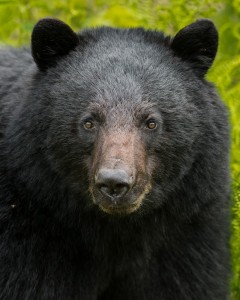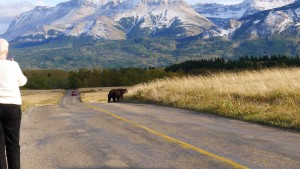
American black bears (Ursus americanus) are unique among North America’s large carnivores. They are opportunists and are typically found in boreal and temperate forests, but also can be found in the backyard to the sub-tropical to the sub-arctic. They are also generalist omnivores, meaning they will eat anything from grass to ants to large mammals.
Black bears were once hunted to (near-) extirpation in certain portions of their range to reduce conflicts with human settlements and agriculture. Habitat depletion and fragmentation further reduced their numbers.
With changes in social and economic values, black bears are expanding their range. Today, black bears can be found throughout parts of North America and northern Mexico. Hunting is allowed in 12 Canadian provinces and territories and 28-29 U.S. states. The International Union for Conservation of Nature (IUCN) estimates that annual black bear harvests in the U.S. and Canada total 40,000–50,000 annually. However, reporting of harvest success is not required in many portions of black bears’ range, including Alberta, Canada.
In southwestern Alberta, spring and fall hunter harvest tags are issued for public and private lands and landowners can harvest black bears year-round without a tag. Despite the popularity of black bear hunting in Alberta, neither harvest method requires reporting to wildlife or enforcement agencies. Poorly managed harvest strategies can result in long term population declines, reduction in subsequent hunter success, and reduced size of bears if harvest rates are high. Like other bear species, black bears are slow-reproducing mammals, producing one to four cubs on average every two to three years. Yet, the last provincial black bear population estimate in Alberta is over 20 years old.

Black bears also face a changing landscape in southwestern Alberta, including an increasing grizzly bear presence. Southwestern Alberta is home to the highest grizzly bear densities in Alberta. Today, places where landowners have historically seen black bears, they report seeing primarily grizzly bears. Dominance hierarchy and predation avoidance hypotheses suggest that grizzly bears could alter the feeding behaviour, activity patterns, and home range sizes of black bears.
In collaboration with the Grizzly Bear Monitoring Project, a new Black Bear Monitoring Project has started in southwestern Alberta by Alberta Environment and Parks, Parks Canada, Alberta Parks, Waterton Biosphere Reserve, and the University of Alberta.
